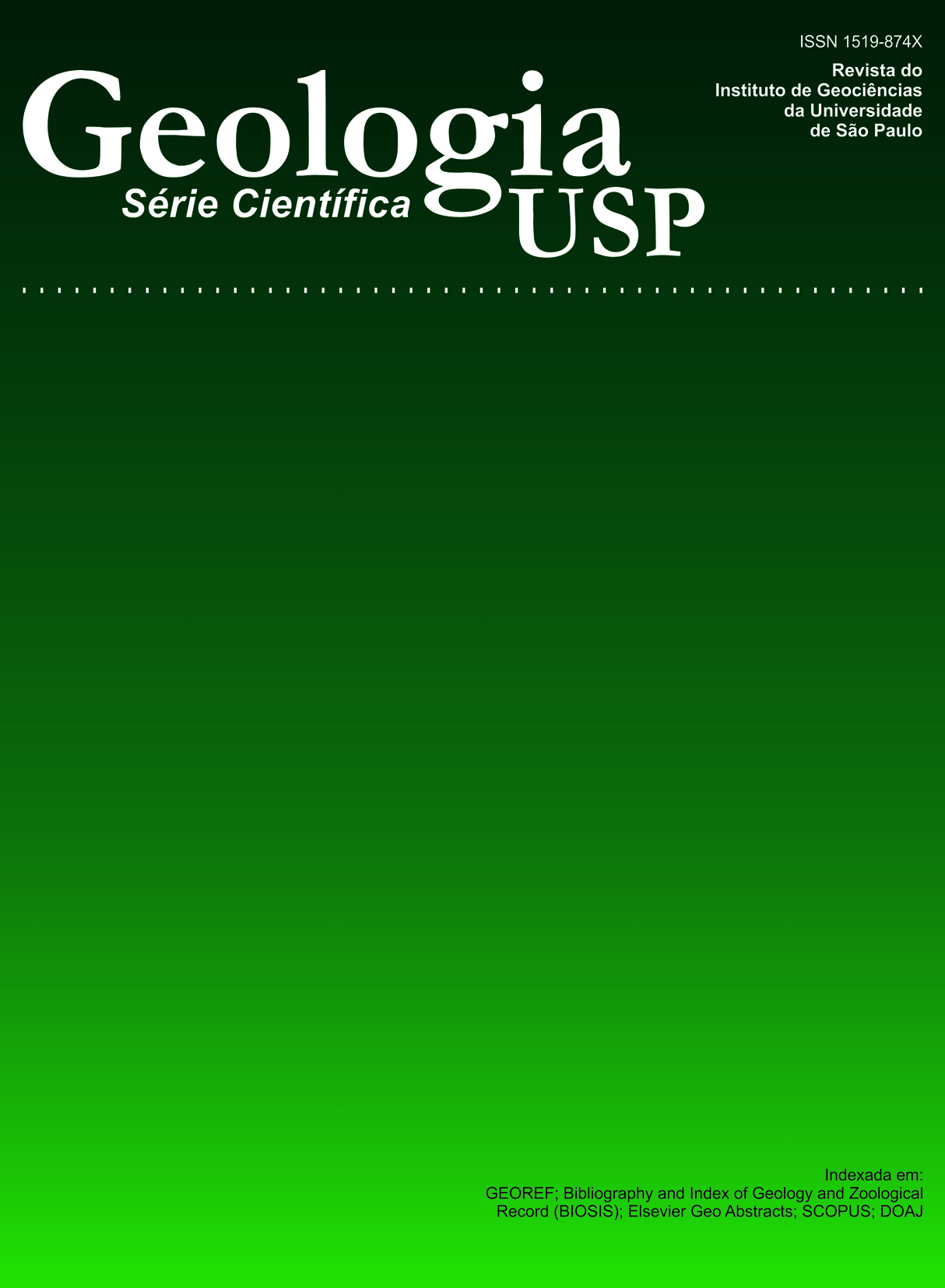Petrography and geochemistry of the Aimorés Charnockitic Complex: an example of post-orogenic plutonism of the Araçuaí/Ribeira Belt
DOI:
https://doi.org/10.5327/Z1519-874X2011000100003Keywords:
Charnockite, Geochemistry, Petrography, Magma mingling/mixing, Post-collisionalAbstract
The Aimorés Complex is an inversely zoned multistage ring-like structure which crops out over about 150 km² and was intruded approximately 500 Ma years ago, during the post-collision event related to Araçuai-Ribeira Fold Belt. This complex consists of a monzodioritic core with hypersthene, and a charnockitic intermediary ring encircled by granodiorites. The contact between core and rim is marked by a mingled/mixed zone, where small occurrences of garnet-granite were also found. Abundant enclaves of different shapes and sizes occur showing circular, diffuse and sharp contacts with the groundmass. The contact with the country rocks is sharp and sub-vertical, varying from concordant to discordant and presenting dips toward the intrusion. The enclosing rocks are orthogneiss, which have experienced high-amphibolite to granulite-facies metamorphism. Most of the facies of the complex are metaluminous, except for the large enclaves embedded in the inner portion, which are peraluminous. The aluminium saturation index is approximately 1 and the agpaitic index ((Na+K)/Al) ranges from 0.45 to 0.77. The negative correlation of CaO, MgO, Fe2O3, TiO2 e P2O5 in the Harker diagram can be explained by pyroxene and feldspar fractionation. The MgO/TiO2 ratio close to 1 and the tectonic discrimination diagrams are compatible with post-collisional granitoids, as well as the sum of Zr, Nb, Ce and Y (500 - 1.000 ppm). The Ba/Sr, Sr/Rb, Ba/Rb and Zn/MgO ratios indicate that there was initially fractionation by pyroxene and plagioclase, followed later by fractionation by amphibole, biotite and K-feldspar. Geochemical data probably reflects the combination of crystal fractionation and/or crustal contamination and magma mingling/mixing processes.Downloads
Download data is not yet available.
Downloads
Published
2011-04-01
Issue
Section
Articles
License
Authors who publish in this journal shall comply with the following terms:
- Authors keep their copyright and grant to Geologia USP: Série Científica the right of first publication, with the paper under the Creative Commons BY-NC-SA license (summary of the license: https://creativecommons.org/licenses/by-nc-sa/4.0 | full text of the license: https://creativecommons.org/licenses/by-nc-sa/4.0/legalcode) that allows the non-commercial sharing of the paper and granting the proper copyrights of the first publication in this journal.
- Authors are authorized to take additional contracts separately, for non-exclusive distribution of the version of the paper published in this journal (publish in institutional repository or as a book chapter), granting the proper copyrights of first publication in this journal.
- Authors are allowed and encouraged to publish and distribute their paper online (in institutional repositories or their personal page) at any point before or during the editorial process, since this can generate productive changes as well as increase the impact and citation of the published paper (See The effect of Open Access and downloads on citation impact).
How to Cite
Mello, F. M. de, Machado, R., & Bilal, E. (2011). Petrography and geochemistry of the Aimorés Charnockitic Complex: an example of post-orogenic plutonism of the Araçuaí/Ribeira Belt . Geologia USP. Série Científica, 11(1), 33-57. https://doi.org/10.5327/Z1519-874X2011000100003





